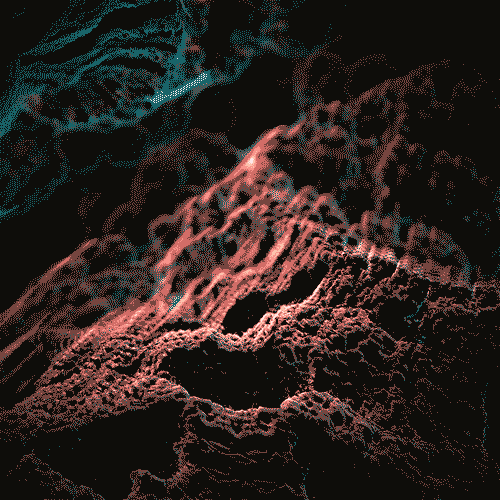Or The Quran.

Or the quran.
More Posts from Tres-4b-blog and Others
hi. happy holidays. I'm going to start my college next month. I'm generally a messy student. I have a hard time managing my schedules and notes. I recently started following some studyblrs. but I'm still lost. I could really use some advice right now. love your studyblr btw.
Helloo! Happy holidays as well :-) Here are a few links that might help:
how to improve your handwriting
balancing study and work
whats in my bag
my favourite stationery
back to school basic supplies
how I stay motivated
tips on maintaining motivation
how to start a studyblr
how to take effective class or lecture notes
how to take notes from a textbook
how to memorise information effectively
my note-taking method
my notebook system
how to write faster
how I organise my binders
good habits to implement
how to study (my method)
how to get ahead in school
dealing with stress
productivity and time management applications
how to remove distractions
Here are some printables that might help you get organised:
2018 monthly planner printables
2018 student printables (2018 overview + calendar, daily + weekly + monthly planner, 30 habit tracker, class overview and timed worklog)
weekly study schedule
note-taking printables (dotted, grid, lined, cornell method)
exam revision printable pack (revision checklist, formulas + definitions sheet, essay + project planner, weekly schedule)
studying printable pack
ultimate student organiser pack
study and revision pack
pomodoro tracker
2018 student planner
2018 weekly planner
grade and assessment planner pack
essay guide and planner pack
student finance planner
note-taking printables (cornell, lecture, dotted, grid, etc)
goal and habit planner
I hope this helps!! Good luck with everything and thank you xx
How much is known about Neptune's atmosphere, more precisely about "raining diamonds"?
The atmosphere of Neptune is, in many ways, similar to that of Uranus. However, its dynamics are presented in a complex configuration of strong winds that sweep the planet, besides the formation of cyclonic storms and clouds, with clearly visible visual characteristics.

The upper atmosphere of Neptune is made up of 79% hydrogen, about 18% helium and most of the remaining methane, the presence of which imparts the blue-indigo color of the planet by absorbing the incident red radiation.

The diamond rain on Neptune and Uranus was predicted long ago, because of the pressure inside the planet that could be formed by carbon and hydrogen. But now it was virtually confirmed by an experiment conducted by an international team of scientists, this “diamond rain” was recreated under laboratory conditions for the first time, giving us the first glimpse into what things could be like inside ice giants.

At about 10,000 km below the surface of these planets, hydrocarbon compression is thought to create diamonds. To recreate these conditions, the international team submitted a polystyrene plastic sample to two shock waves using an intense optical laser in the Matter in Extreme Conditions (MEC) instrument, which were then paired with X-ray pulses from Linac Coherent Light Source SLAC (LCLS).

Polystyrene is made from a mixture of hydrogen and carbon, key components of the general chemical composition of the ice giants. In the experiment, the team was able to see that almost all of the carbon atoms in polystyrene were embedded in small diamond structures up to a few nanometers wide.
However, in Uranus and Neptune, scientists predict that diamonds would become much larger, perhaps millions of carats by weight.
2°image: (This false color photograph of Neptune was made from Voyager 2 images taken through three filters: blue, green, and a filter that passes light at a wavelength that is absorbed by methane gas. Thus, regions that appear white or bright red are those that reflect sunlight before it passes through a large quantity of methane). 1°image, 3°image & 4°image.
Here are two links if you want to read about it: Click here and here.










Cosmology’s Biggest Conundrum Is A Clue, Not A Controversy
“This is not some fringe idea, where a few contrarian scientists are overemphasizing a small difference in the data. If both groups are correct — and no one can find a flaw in what either one has done — it might be the first clue we have in taking our next great leap in understanding the Universe. Nobel Laureate Adam Riess, perhaps the most prominent figure presently researching the cosmic distance ladder, was kind enough to record a podcast with me, discussing exactly what all of this might mean for the future of cosmology.
It’s possible that somewhere along the way, we have made a mistake somewhere. It’s possible that when we identify it, everything will fall into place just as it should, and there won’t be a controversy or a conundrum any longer. But it’s also possible that the mistake lies in our assumptions about the simplicity of the Universe, and that this discrepancy will pave the way to a deeper understanding of our fundamental cosmic truths.”
In science, if you want to know some property of the Universe, you need to devise a measurement or set of measurements you can make to reveal the quantitative answer. When it comes to the expanding Universe, we have many different methods of measuring light that fall into two independent classes: using the imprint of an early relic and using the cosmic distance ladder. These two techniques each give solid results that are mutually inconsistent: the distance ladder teams find results that are higher than the early relic teams by about 9%. Since the errors are only about 1-2% on each measurements, this has been dubbed cosmology’s biggest controversy.
But perhaps it’s not about “who is right,” but rather about “what is the Universe doing?” Perhaps it’s a clue, not a controversy. Come learn about the cutting-edge science behind this fascinating and unexpected result.

A Solar Filament Erupts : What’s happened to our Sun? Nothing very unusual – it just threw a filament. Toward the middle of 2012, a long standing solar filament suddenly erupted into space producing an energetic Coronal Mass Ejection (CME). The filament had been held up for days by the Sun’s ever changing magnetic field and the timing of the eruption was unexpected. Watched closely by the Sun-orbiting Solar Dynamics Observatory, the resulting explosion shot electrons and ions into the Solar System, some of which arrived at Earth three days later and impacted Earth’s magnetosphere, causing visible aurorae. Loops of plasma surrounding an active region can be seen above the erupting filament in the featured ultraviolet image. Although the Sun is now in a relatively inactive state of its 11-year cycle, unexpected holes have opened in the Sun’s corona allowing an excess of charged particles to stream into space. As before, these charged particles are creating auroras. via NASA
2019 April 28
All of Mercury Image Credit: NASA/JHU Applied Physics Lab/Carnegie Inst. Washington
Explanation: Only six years ago, the entire surface of planet Mercury was finally mapped. Detailed observations of the innermost planet’s surprising crust began when the robotic have been ongoing since the robotic MESSENGER spacecraft first passed Mercury in 2008 and continued until its controlled crash landing in 2015. Previously, much of the Mercury’s surface was unknown as it is too far for Earth-bound telescopes to see clearly, while the Mariner 10 flybys in the 1970s observed only about half. The featured video is a compilation of thousands of images of Mercury rendered in exaggerated colors to better contrast different surface features. Visible on the rotating world are rays emanating from a northern impact that stretch across much of the planet, while about half-way through the video the light colored Caloris Basin rotates into view, a northern ancient impact feature that filled with lava. Recent analysis of MESSENGER data indicates that Mercury has a solid inner core.
∞ Source: apod.nasa.gov/apod/ap190428.html









Custom cursor malware that destroyed your computer in 2008 and got you yelled at by your mom moodboard
-
 zun-artsblog liked this · 4 years ago
zun-artsblog liked this · 4 years ago -
 scionopus58 liked this · 4 years ago
scionopus58 liked this · 4 years ago -
 matchamilkyt liked this · 4 years ago
matchamilkyt liked this · 4 years ago -
 adumbluckyfish liked this · 4 years ago
adumbluckyfish liked this · 4 years ago -
 onerandomwierdo liked this · 4 years ago
onerandomwierdo liked this · 4 years ago -
 thegirlwithoutaname87 liked this · 4 years ago
thegirlwithoutaname87 liked this · 4 years ago -
 dyssols liked this · 4 years ago
dyssols liked this · 4 years ago -
 the-fangirl-rebel liked this · 4 years ago
the-fangirl-rebel liked this · 4 years ago -
 h-qaboos liked this · 5 years ago
h-qaboos liked this · 5 years ago -
 kaal-singh liked this · 5 years ago
kaal-singh liked this · 5 years ago -
 lounaticm liked this · 5 years ago
lounaticm liked this · 5 years ago -
 justenberg liked this · 5 years ago
justenberg liked this · 5 years ago -
 valunik reblogged this · 5 years ago
valunik reblogged this · 5 years ago -
 mortal-admirer-of-all-beauty liked this · 5 years ago
mortal-admirer-of-all-beauty liked this · 5 years ago -
 the-real-fandom-person reblogged this · 5 years ago
the-real-fandom-person reblogged this · 5 years ago -
 the-real-fandom-person liked this · 5 years ago
the-real-fandom-person liked this · 5 years ago -
 escapistartist liked this · 5 years ago
escapistartist liked this · 5 years ago -
 mydisappointmentlieshere liked this · 5 years ago
mydisappointmentlieshere liked this · 5 years ago -
 tres-4b-blog reblogged this · 5 years ago
tres-4b-blog reblogged this · 5 years ago -
 overthinkingtakingplace liked this · 5 years ago
overthinkingtakingplace liked this · 5 years ago -
 beardedpursedreamerparty liked this · 5 years ago
beardedpursedreamerparty liked this · 5 years ago -
 aribardawulf liked this · 5 years ago
aribardawulf liked this · 5 years ago -
 itsallaboutthebirds86 liked this · 5 years ago
itsallaboutthebirds86 liked this · 5 years ago -
 chokit-pyrus reblogged this · 5 years ago
chokit-pyrus reblogged this · 5 years ago -
 chokit-pyrus liked this · 5 years ago
chokit-pyrus liked this · 5 years ago -
 transgenderangel liked this · 5 years ago
transgenderangel liked this · 5 years ago -
 adamaslex liked this · 5 years ago
adamaslex liked this · 5 years ago -
 bogudusubogjenece liked this · 5 years ago
bogudusubogjenece liked this · 5 years ago -
 psynom liked this · 5 years ago
psynom liked this · 5 years ago -
 doctormilo liked this · 5 years ago
doctormilo liked this · 5 years ago -
 onmykneesforhotdilfs liked this · 5 years ago
onmykneesforhotdilfs liked this · 5 years ago -
 barettapr liked this · 5 years ago
barettapr liked this · 5 years ago -
 gary-ramad liked this · 5 years ago
gary-ramad liked this · 5 years ago -
 crystalthevampirate liked this · 5 years ago
crystalthevampirate liked this · 5 years ago -
 nogthundermuffin liked this · 5 years ago
nogthundermuffin liked this · 5 years ago -
 babyvoidangeltree-blog liked this · 5 years ago
babyvoidangeltree-blog liked this · 5 years ago -
 worldstarmoneyyy liked this · 5 years ago
worldstarmoneyyy liked this · 5 years ago




